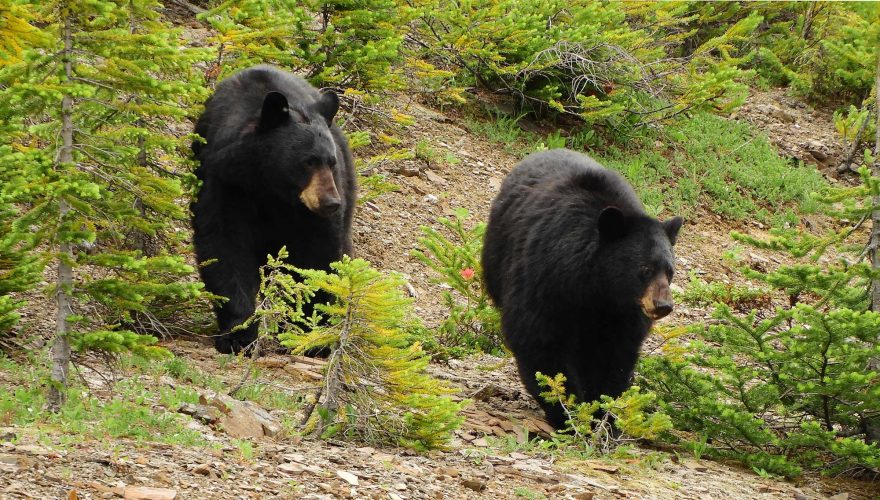
Image by Nina B, Shutterstock
For some people, seeing a black bear with her trailing cubs in Great Smoky Mountains National Park would be a bucket list experience. For others, photographing a black bear in a tree with a mountain backdrop would be another. But for some, the fear of encountering a black bear in nature may deter them from heading out into the woods altogether. But if you know how to be safe in black bear territory, you can ease some of those fears.
Black bears are one of the most common types of bears found in North America. And when you’re venturing outside, you could encounter a black bear living in the wild in more than 35 U.S. states. Researchers with the California Department of Fish and Wildlife estimate California’s black bear population alone is between 30,000 and 40,000. Black bears are also known to be curious and opportunist creatures.
While black bear attacks on humans are extremely rare, you’ll want to be sure you’re staying safe when you’re enjoying nature in their territory. According to North American Bear Center experts, there have been only 61 fatal black bear attacks reported since 1900. “My chances of being killed by a domestic dog, bees, or lightning are vastly greater,” said Dr. Lynn Rogers. “One of the safest places a person can be is in the woods.”
One of the first steps in staying safe in black bear country is to understand the differences between encountering a black bear versus a grizzly bear. Grizzly bears are much larger and more aggressive than black bears. Also, grizzly bears are only found in specific areas such as Alaska, Montana, and western Canada. Being safe in grizzly bear country has some similarities, but also some differences, so you’ll want to know how to stay safe in grizzly territory if you’re traveling to states with grizzly populations.
Since black bears are typically smaller and less aggressive than grizzly bears (but can still be dangerous if provoked or surprised), it’s most important to stand your ground and make yourself appear larger than you are if you come into close proximity with a black bear.
Here are five tips to help you stay safe in black bear country:
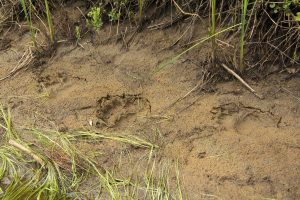
Image by Jeff Holcombe, Shutterstock
1. Make Noise While Hiking
Black bears are known to be generally shy creatures. You’ll probably see more of the back of black bears than anything when you’re out hiking. Also, black bears will typically avoid humans if they are aware a human is in the area.
Making noise while you’re hiking can help keep black bears at bay. You could do things like talking loudly, singing or clapping your hands periodically. All the noises you make can help alert bears to your presence and prevent surprise encounters.

Image by nyker, Shutterstock
2. Keep a Clean Campsite
Making sure your campsite is clean is extremely important. Black bears have an incredible sense of smell. Florida’s Fish and Wildlife Conservation Commission experts say that black bears can pick up a scent from more than a mile away. That is more than seven times better than a bloodhound. Bears are considered to have the best sense of smell of any land mammal. Their rumored poor vision may be due to their reliance on their sense of smell.
So, when you’re done cooking at your campsite or even enjoying a packed lunch, be sure to put away your food and clean up all wrappers and food packaging. And remember to always pack away food and strongly scented items before you go to sleep at night. Even a stray marshmallow dropped near your campfire or a smear of jelly on your picnic table can be enticing to a black bear.
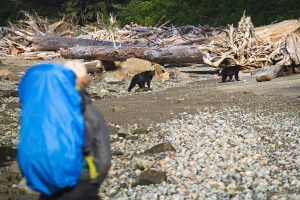
Image by Tomas Kulaja, Shutterstock
3. Don’t Run If You Encounter A Black Bear
If you do come in close contact with a black bear, it’s important to remain calm and stand your ground. Make yourself big by raising both arms and being loud. You could shout, “Go away bear!”
Making yourself appear large will typically deter a black bear from staying. Running from a black bear could trigger the bear’s instinct to chase prey, so by making yourself appear large and slowly backing away while facing the bear is much better than turning your back.
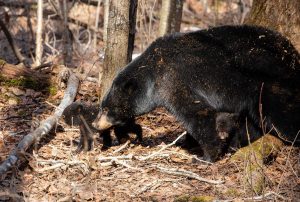
Image by Alaska Wild, Shutterstock
4. Stay Far Away From Bear Cubs
Although black bear cubs are adorable and make for a great photograph, you should avoid staying near bear cubs when you’re in black bear territory. Wherever you see bear cubs, you can be sure that mama bear isn’t far away. And mama bears are protective of their cubs.
Remember to let the black bear cubs continue their activities undisturbed. If they’re crossing your hiking trail, stop and keep your distance — letting them act as they normally do in nature. After all, you don’t want to be caught in between a mama black bear and her cubs as it could make her feel threatened.
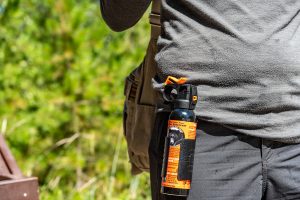
Image by Lost_in_the_Midwest, Shutterstock
5. Carry — And Know How To Use — Bear Spray
If you’re planning to camp or hike in black bear country, having bear spray (a form of pepper spray) on you at the ready can be a good line of defense if you unexpectedly encounter a black bear up close.
But simply having bear spray on you isn’t enough. You need to know how to properly use it — especially in a moment of surprise when everything happens fast. If you know how to use your bear spray before you head out, you can feel confident that you could defend yourself if necessary.
One thing you can do to educate yourself on the ins and outs of using your bear spray is to buy a test bottle of bear spray from your local sporting goods store. Practice using it at home before you go out. Get to know the spray range, how to aim it and how to quickly remove it from your belt or harness.
Know where to aim if you happen to encounter a black bear. Some experts recommend aiming at the eyes, nose and mouth if the bear is in close range as it could increase the chances of stopping the bear from coming closer. Other experts recommend spraying your bear spray like a cloud between you and the bear and emptying your can.
It’s important to understand that bear spray is not a guarantee of safety and should be used only as a last resort when other preventive measures have failed.
Remember, when it comes to black bear safety, prevention is key. By following these simple tips and being aware of your surroundings, you can help avoid an encounter with a black bear. Read more about staying safe in black bear country on the U.S. Forest Service website.
Suzanne Downing is an outdoor writer and photographer in Montana with an environmental science journalism background. Her work can be found in Outdoors Unlimited, Bugle Magazine, Missoulian, Byline Magazine, Communique, MTPR online, UM Native News, National Wildlife Federation campaigns and more.

 Your Privacy Choices
Your Privacy Choices

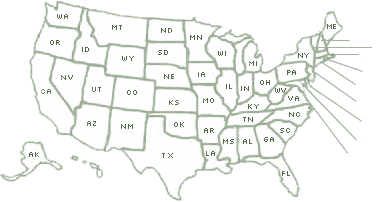
 The
The